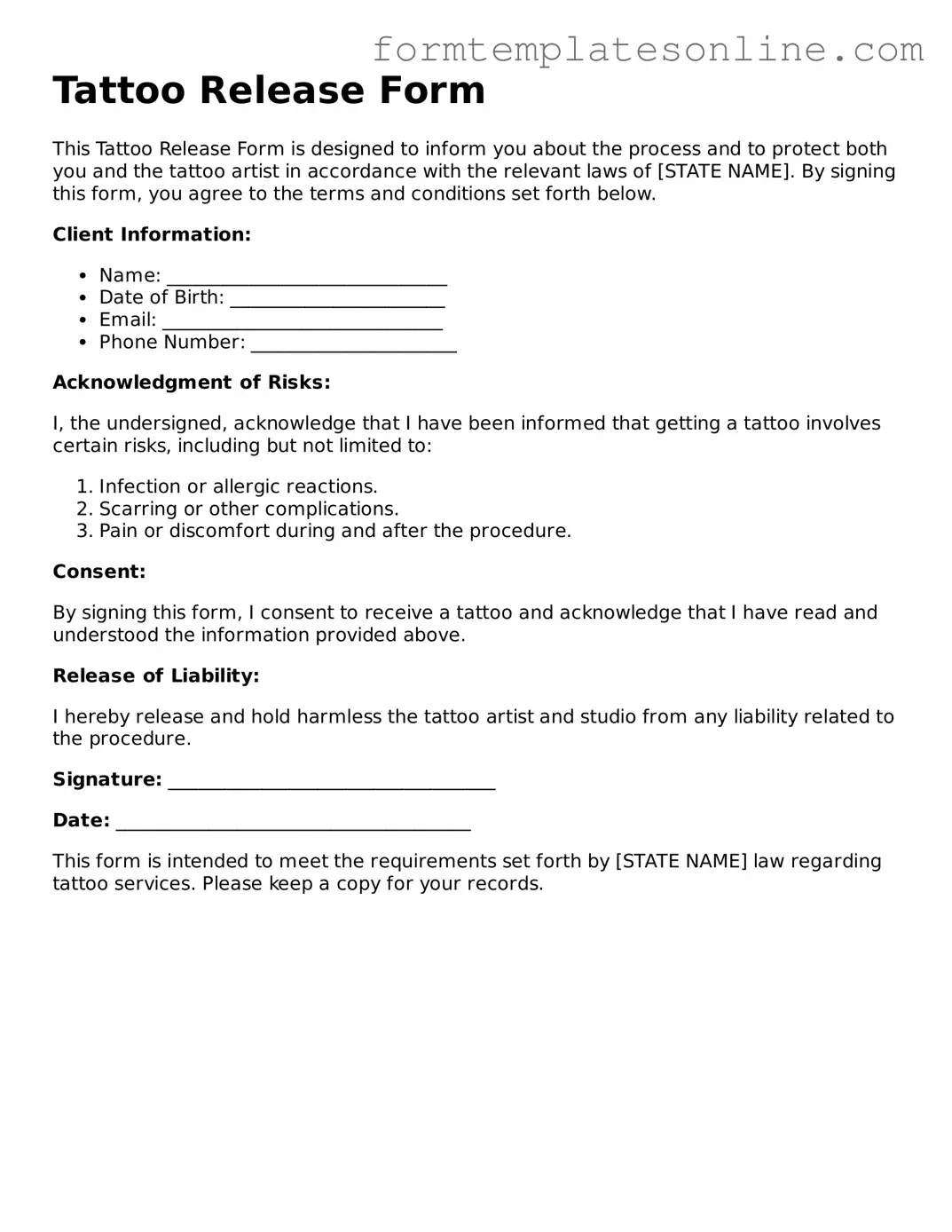What is a Tattoo Release form?
A Tattoo Release form is a document that individuals sign to give permission for a tattoo artist to create a tattoo on their body. This form typically outlines the rights and responsibilities of both the client and the artist, ensuring that both parties understand the terms of the tattooing process.
Why is a Tattoo Release form necessary?
The Tattoo Release form serves multiple purposes. It protects the tattoo artist from liability in case of any complications or adverse reactions that may arise after the tattoo is applied. Additionally, it ensures that the client is aware of the risks involved in getting a tattoo, such as infection or allergic reactions.
What information is included in a Tattoo Release form?
The form generally includes the client's name, contact information, and details about the tattoo, such as its design, size, and placement on the body. It may also contain a section where the client acknowledges understanding the risks associated with getting a tattoo.
Do I need to be a certain age to sign a Tattoo Release form?
Yes, most states require individuals to be at least 18 years old to sign a Tattoo Release form without parental consent. Minors may need a parent or guardian to sign the form on their behalf, depending on local laws and regulations.
Can I change my mind after signing the Tattoo Release form?
Once the Tattoo Release form is signed, it typically indicates that you are ready to proceed with the tattoo. However, if you have concerns or wish to change your mind, it is best to communicate with the tattoo artist before the tattooing process begins. Once the tattooing starts, it may be more challenging to withdraw consent.
What happens if I experience an allergic reaction after getting a tattoo?
If you experience an allergic reaction after getting a tattoo, it is important to seek medical attention immediately. The Tattoo Release form may outline that the tattoo artist is not liable for any medical issues arising from the tattoo, but it is crucial to prioritize your health and safety.
Is a Tattoo Release form the same as a consent form?
Yes, a Tattoo Release form is often considered a type of consent form. Both documents serve to inform clients about the process and risks involved while ensuring that they agree to the terms before proceeding with the tattoo.
Can I request changes to the Tattoo Release form?
Clients may request changes to the Tattoo Release form, but the tattoo artist has the right to accept or deny those requests. It is essential to discuss any concerns or modifications with the artist before signing the form.
What should I do if I lose my copy of the Tattoo Release form?
If you lose your copy of the Tattoo Release form, contact the tattoo studio where you had the tattoo done. They may have a record of the signed form and can provide you with a copy or assistance regarding your situation.
Are Tattoo Release forms legally binding?
Yes, Tattoo Release forms are generally considered legally binding documents. However, their enforceability may vary based on state laws and the specific language used in the form. It is advisable to read the form carefully and consult legal advice if you have questions about its implications.
